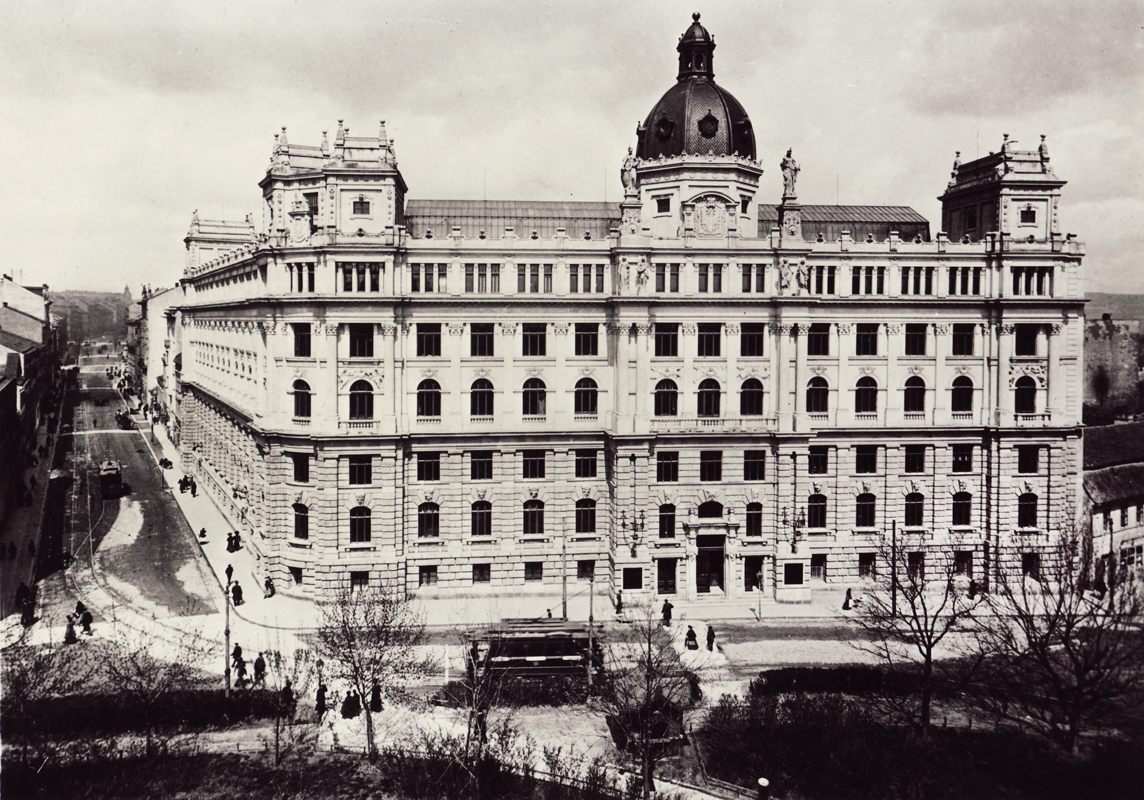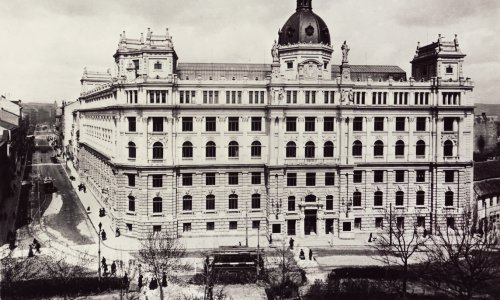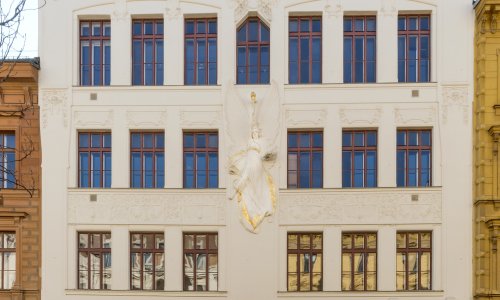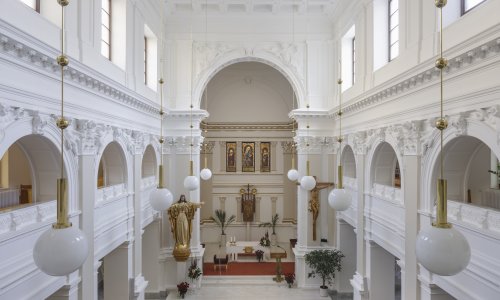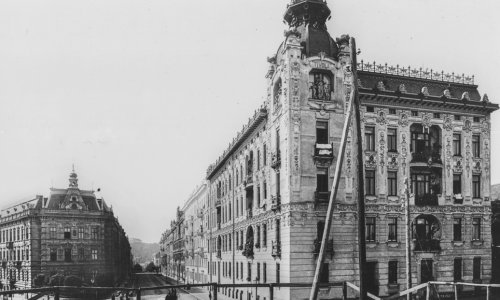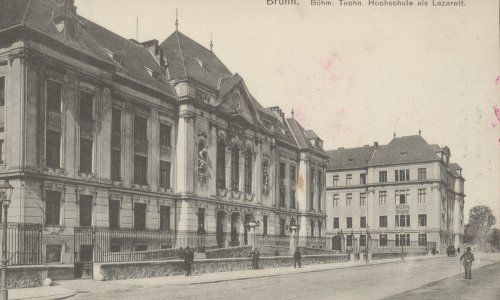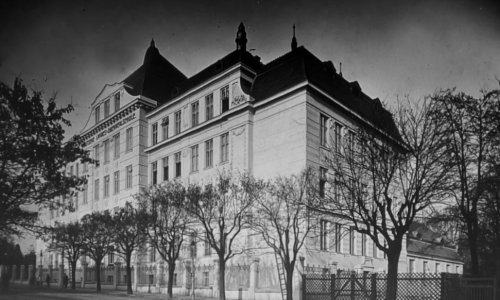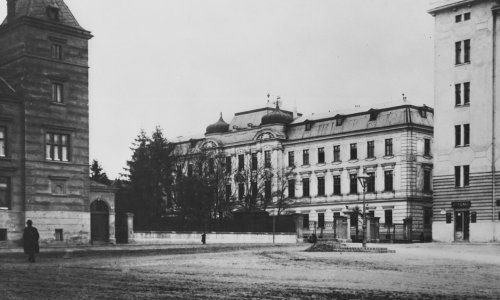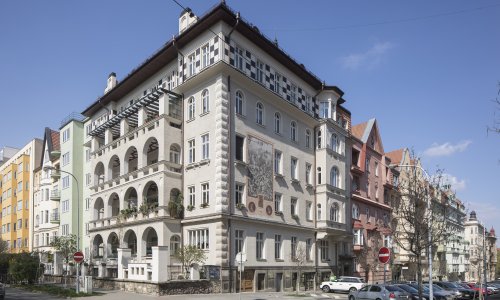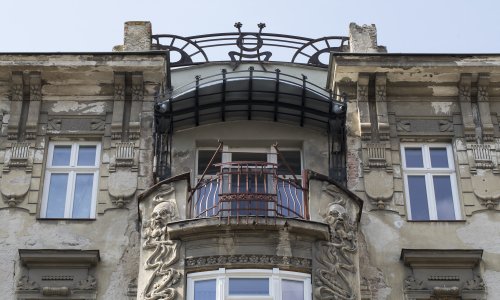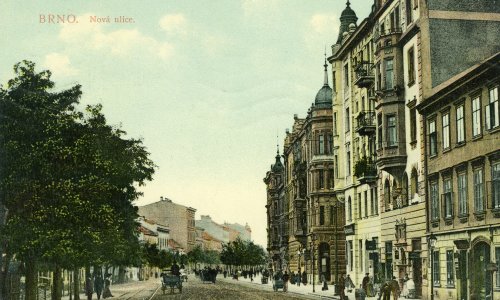Veveří 1900–1918
This trail is named after the area’s main road, part of the old trade route leading to Veveří Castle, around which new construction began as early as the second half of the 19th century.
We start by one of the Moravian capital’s most important public buildings, Ferdinand Hrach’s Provincial Chamber. Along with this monumental historicist home for the Moravian Diet, two new apartment buildings with distinctive Art Nouveau décor were built nearby. This stylistic pluralism of the first decade of the 20th century is perfectly illustrated by the public tender for a new Czech theatre that was expected to round out the building ensemble on Žerotínovo náměstí (Žerotín Square).
Unique Art Nouveau decoration with a distinctively executed allegory of education graces the facade of the Vesna girls’ lyceum on Jaselská Street, today home to a secondary nursing school. Patient care is also the calling of the Franciscan Sisters, who operate a nursing school at the Church of the Holy Family, which lies hidden behind a simple facade on nearby Grohova Street.
From here, our route leads along picturesque Jiráskova Street, where we encounter the Herold House (renovated according to plans by Adolf Loos) , before going to see and the ensemble of apartment buildings known as Tivoli, Franz Pawlu’s most important project and the defining element of Konečného náměstí.
The next part of the tour shifts our focus onto a different type of building – schools. These include a Czech technical school, a former seminary, a Czech and German secondary school and a Czech elementary school built around today’s Kounicova Street in the vicinity of Tyrš Park, which was founded in 1907 on the site of a former cemetery. Not far from here, Friedrich Wilhelm Schmeer and architect Vladimír Fischer built a residential ensemble whose corner building is decorated with a large sgraffito depicting the Swedish siege of Brno. We end our tour at a modernist building that originally housed a cinema – today’s Municipal Theatre on Lidická Street.
In the early 20th century, central Brno was connected with Královo Pole via Neugasse (today, the street begins as Lidická and changes names several times). At the time, a steam-powered streetcar running down the street helped to develop the cadastral district of Ponava. The area is worth a visit to see the interesting early 20th-century rental housing built by the architects Vladimír Fischer and Anton Jelinek alongside the existing older factories and army buildings.
Lucie Valdhansová
Name
Veveří 1900–1918
Length
3,5 KM
Number of objects
25
Trail Starts Here
Žerotínovo náměstí
First object
South Moravian Regional Administration (Provincial Chamber II)
B096
GPS
Download as GPX file
Download as KML file
